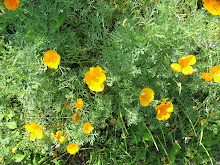The old Minton horse stable, consisting of a barn, paddock, and riding ring, was in operation until the late 1980s, though I've been told that back in the 1970s, the nearby English High School had eyed the land (and the urban wild behind it) for a new facility. By the time I moved to this Jamaica Plain neighborhood in 1989, the stable had already been shut down. When the owner at that time failed to keep up with the taxes, the City of Boston took over the property.
People became concerned that if the stables weren't rebuilt, then the land would be used for non-market housing, increasing the density of an already dense neighborhood of mostly 3-family homes. Paul Novograd, a New York-based developer who had been involved with the stables in Central Park, expressed interest for what turned out to be an ambitious proposal that would require a combination of municipal and foundation money--around $3 million--to not only rebuild the stable but renovate riding trails in nearby Franklin Park.
In the summer of 1992, one of my neighbors, Allan Ihrer, approached me outside my Williams Street apartment and asked if I had seen the plans for the new stable. No, I hadn't. I was busy with grad school, and thought that the new stable was a done deal. He then asked me if I was aware that the new paddock would house seventy horses. I agreed with him that seventy was too many--not quite a factory farm of chickens that couldn't roam, but overcrowded nevertheless, not to mention on property abutting my building.
He then asked me to sign a petition in favor of establishing a community garden; a neighbor had already started planting there. I said that I would, and that I had heard about this guy--wasn't he homeless? This is what one of the handful of people I knew in the neighborhood at that point had told me. No, I was mistaken. John Carroll, a Vietnam vet who worked at landscaping and other jobs, rented a small house on Shurland Street.
Allan was part of a group of five neighbors who presented a counterproposal at a community meeting in 1993. However, the vote was 65-5 in favor of the stable plan. Still, efforts to fight the plan continued. A few teachers wrote letters to the Jamaica Plain Gazette questioning the diversion of funds toward the project. Allan and his partner Kim Kudrna met with Mayor Thomas Menino over a meal at Doyles to discuss the issue; he had told them it was a done deal.
Or was it? Originally, Novograd would provide a small portion of the funding toward the new stable. Then the city asked him to kick in an additional $100,000. For reasons unclear, he didn't, and the whole deal eventually fizzled out. Also, when the city had the old riding rink taken down, John's garden was kept intact.
By 1993, 6-8 neighbors were gardening on the site, and their plots were spared even as the main stable building was demolished. But the land still belonged to the city, and the gardeners figured that it was only a matter of a few years before a stable would be built or the land put to a different use. Allan, who along with Kim provided most of the background for this post, recalls that their next strategy was, "Let's make this place as pretty as we can."
To be continued...



No comments:
Post a Comment